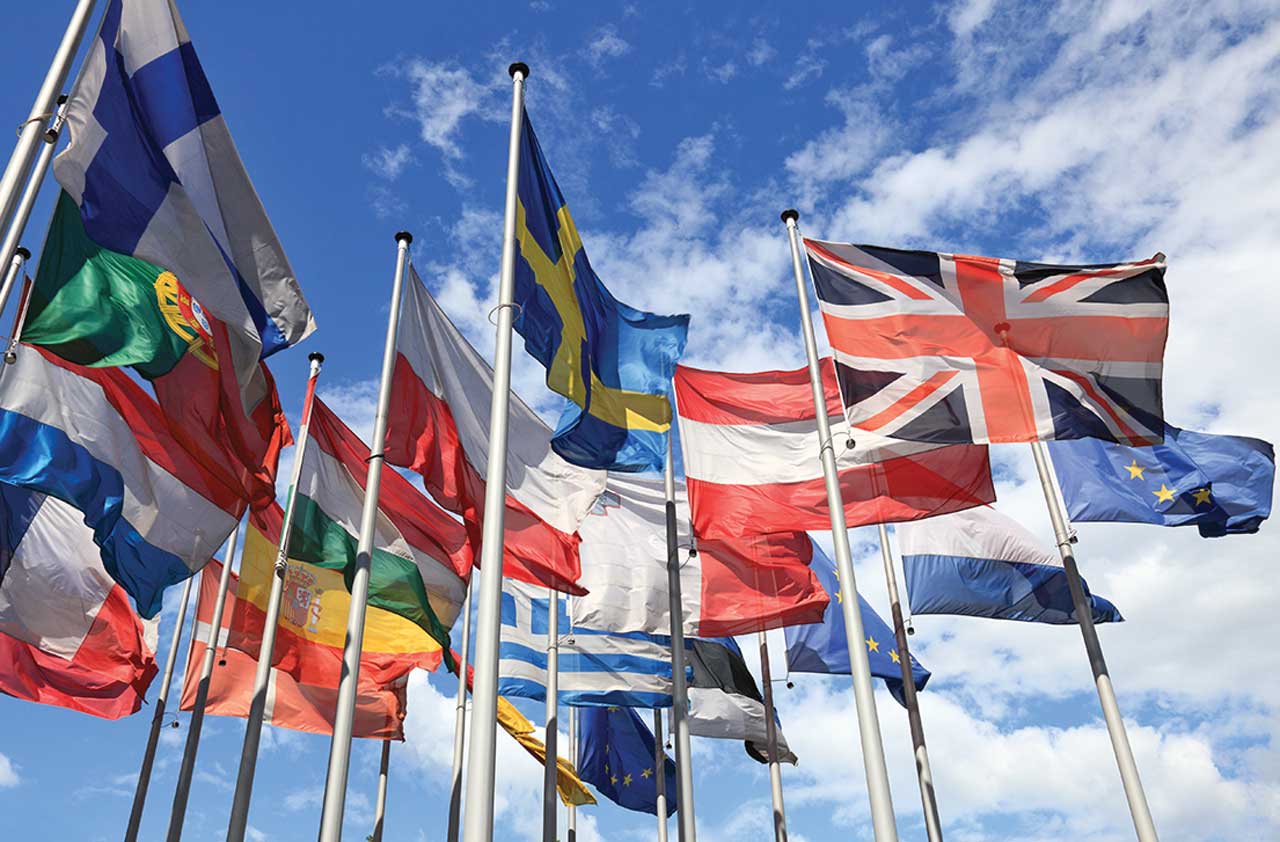Investors, Find Bargains Overseas in 2018
Time to check your allocations. The bull run in the U.S. means the better valuations are abroad.


Global markets give U.S. investors the chance to broaden their bull market gains. “We like international stocks across the board,” says strategist Samantha Azzarello, of J.P. Morgan Asset Management. For a moderate-risk portfolio with 60% of assets in stocks, Azzarello thinks 21% of stock holdings should be invested internationally—15% allocated to developed markets and 6% to emerging markets.
After a long bull market here, investors are likely to have too much of their money riding on the U.S. And because most investors already have a strong home-market bias, the imbalance could be pronounced, says portfolio manager Kathryn Koch, of Goldman Sachs Asset Management. “Investors need to move beyond U.S. borders to where there are interesting growth opportunities at much better valuations,” she says.
In Europe, for example, major stock indexes have yet to return to their 2007 peaks, while Standard & Poor’s 500-stock index is 65% higher than its 2007 high point. Eurozone manufacturing activity is hitting six-year highs, unemployment is at an eight-year low, and corporate profits are growing. The MSCI Europe index returned more than 20% through October 2017 but trades at a price-earnings ratio of just 15, compared with 18 for the S&P 500.

Sign up for Kiplinger’s Free E-Newsletters
Profit and prosper with the best of expert advice on investing, taxes, retirement, personal finance and more - straight to your e-mail.
Profit and prosper with the best of expert advice - straight to your e-mail.
Portfolio manager Saira Malik, global stock chief at investment firm Nuveen, likes stocks that are tied to the growing economy in Europe. She recommends ING, the Dutch banking giant, traded here as an American depositary receipt (symbol ING, $19). Oakmark International (OAKIX), a Kiplinger 25 fund, has 57% of assets invested in Europe.
Emerging markets have rallied sharply since 2016 but are still in the early stages of a multiyear winning streak, says Kate Moore, chief stock strategist at BlackRock. She sees a broad-based earnings recovery in both new- and old-economy sectors, including tech, industrials and energy, bolstered by growing economies and business reforms. Still, she notes, average P/Es are below those of developed markets. She sees opportunities in markets including India, Indonesia, Brazil and Argentina. Investors who prefer to navigate risky emerging markets with professional help should consider Kip 25 fund Baron Emerging Markets (BEXFX).
Experts disagree on the prospects for Japan. The country faces demographic pressures from an aging population, which will keep a lid on economic growth. But Japan’s Nikkei index recently traded at a 21-year high. The bulls point to recent solid economic readings and companies that are major players in leading-edge trends, including electric and autonomous-drive vehicles, factory automation, and serving the emerging world’s burgeoning consumer class. T. Rowe Price Japan (PRJPX) is a solid choice for investors.
Get Kiplinger Today newsletter — free
Profit and prosper with the best of Kiplinger's advice on investing, taxes, retirement, personal finance and much more. Delivered daily. Enter your email in the box and click Sign Me Up.

Anne Kates Smith brings Wall Street to Main Street, with decades of experience covering investments and personal finance for real people trying to navigate fast-changing markets, preserve financial security or plan for the future. She oversees the magazine's investing coverage, authors Kiplinger’s biannual stock-market outlooks and writes the "Your Mind and Your Money" column, a take on behavioral finance and how investors can get out of their own way. Smith began her journalism career as a writer and columnist for USA Today. Prior to joining Kiplinger, she was a senior editor at U.S. News & World Report and a contributing columnist for TheStreet. Smith is a graduate of St. John's College in Annapolis, Md., the third-oldest college in America.
-
 Stock Market Today: Stocks Soar on China Trade Talk Hopes
Stock Market Today: Stocks Soar on China Trade Talk HopesTreasury Secretary Bessent said current U.S.-China trade relations are unsustainable and signaled hopes for negotiations.
By Karee Venema
-
 2026 Disney Dining Plan Returns: Free Dining for Kids & Resort Benefits
2026 Disney Dining Plan Returns: Free Dining for Kids & Resort BenefitsPlan your 2026 Walt Disney World vacation now. Learn about the returning Disney Dining Plan, how kids aged three to nine eat free, and the exclusive benefits of staying at a Disney Resort hotel.
By Carla Ayers
-
 How Inflation, Deflation and Other 'Flations' Impact Your Stock Portfolio
How Inflation, Deflation and Other 'Flations' Impact Your Stock PortfolioThere are five different types of "flations" that not only impact the economy, but also your investment returns. Here's how to adjust your portfolio for each one.
By Kim Clark
-
 Kiplinger's Economic Calendar for This Week (April 21-25)
Kiplinger's Economic Calendar for This Week (April 21-25)This week's economic calendar features several Fed speakers and a key reading on consumer sentiment.
By Karee Venema
-
 Why I Still Won't Buy Gold: Glassman
Why I Still Won't Buy Gold: GlassmanOne reason I won't buy gold is because while stocks rise briskly over time – not every month or year, but certainly every decade – gold does not.
By James K. Glassman
-
 Should You Use a 25x4 Portfolio Allocation?
Should You Use a 25x4 Portfolio Allocation?The 25x4 portfolio is supposed to be the new 60/40. Should you bite?
By Nellie S. Huang
-
 Retirement Income Funds to Keep Cash Flowing In Your Golden Years
Retirement Income Funds to Keep Cash Flowing In Your Golden YearsRetirement income funds are aimed to engineer a steady payout of cash for retirees. Here are a few we like.
By Nellie S. Huang
-
 10 2024 Stock Picks From An Investing Expert
10 2024 Stock Picks From An Investing ExpertThese 2024 stock picks have the potential to beat the market over the next 12 months.
By James K. Glassman
-
 Special Dividends Are On The Rise — Here's What to Know About Them
Special Dividends Are On The Rise — Here's What to Know About ThemMore companies are paying out special dividends this year. Here's what that means.
By Kim Clark
-
 How to Invest in AI
How to Invest in AIInvestors wanting to know how to invest in AI should consider these companies that stand to benefit from the boom.
By Kim Clark